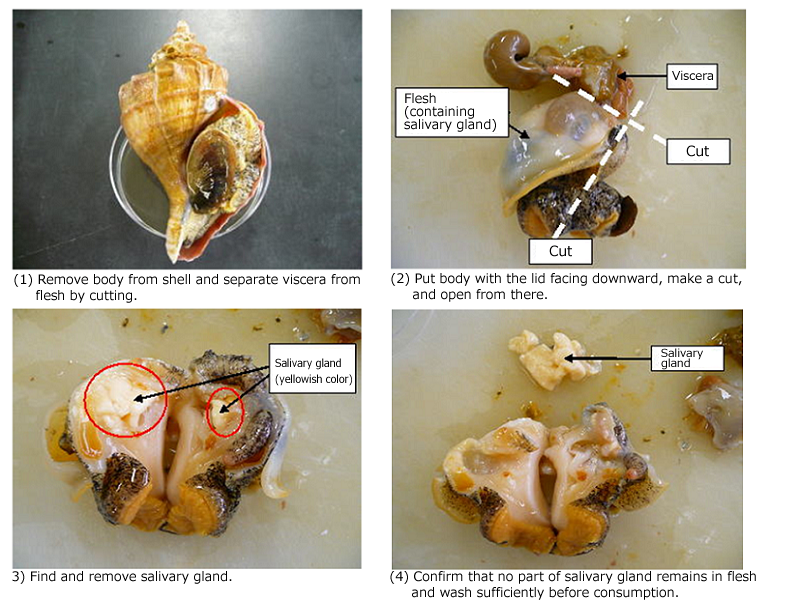Tokyo Food Safety Information Center » Tokyo Metropolitan Government food safety FAQ » I hear that whelks are poisonous. Is it true?
I hear that whelks are poisonous. Is it true?

I hear that whelks are poisonous. Is it true?

- The salivary glands of whelks may contain a poisonous matter called tetramine (salivary gland poison).
- Ingestion of whelks without removing the salivary glands may cause symptoms such as headache, dizziness, and feeling of seasickness appearing approximately 30 minutes to one hour after ingestion. Note that it is reported that the symptoms may disappear in several hours in ordinary cases.
- Before cooking whelks with shells purchased in market, appropriately remove the salivary glands to avoid food poisoning.


1. Keys to prevention of food poisoning from tetramine (salivary grand poison) of whelks
- See the above-shown photos for the steps to remove the salivary gland from a whelk.
- The quantity of tetramine contained in the salivary gland of a whelk differs individually but the amount of poison from one whelk may reach the toxic dose.
- Tetramine does not decompose by means of the heat used in ordinary cooking.
- Heating a whelk in boiling water for ten minutes reportedly caused some tetramine to transfer from the salivary gland to muscle, viscera, and the water.
2. Species of whelks producing tetramine (salivary gland poison):
Conches such as species of whelks including arthritic Neptune, double-sculptured Neptune, and Korean Neptune
* The conches in the species of whelks are generally called as “tsubugai”, some of which have no poison.